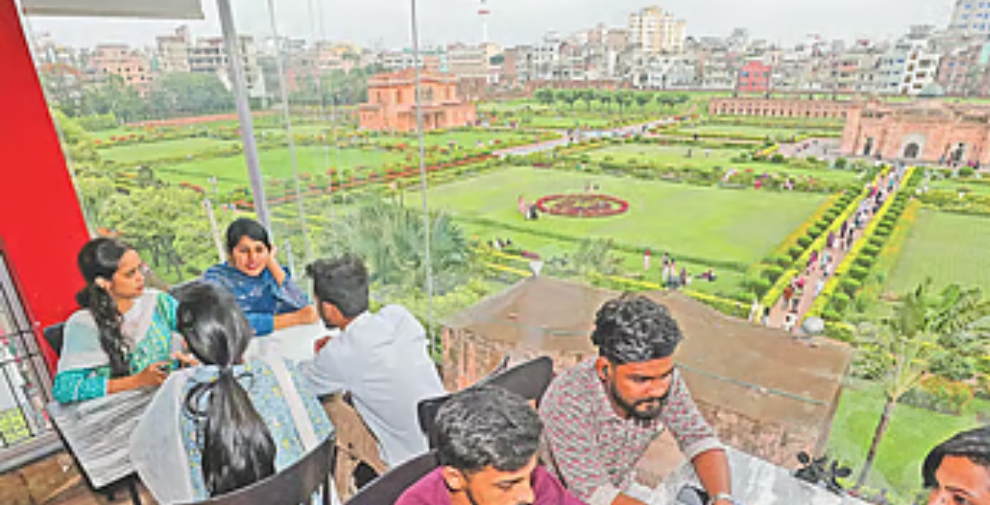Desk Report,
Culinary delights in the proximity of tradition
When we think of Lalbagh, we think of the Mughal fort. This famous Mughal architecture is a landmark of Dhaka city. Those who come to visit Dhaka, Lalbagh Fort is one of their destinations as a tourist attraction. The residents of Dhaka also go to see the impeccable architecture and historical monuments of the Mughal period to escape the fatigue and boredom of their busy lives.
Culinary delights in the proximity of tradition
In addition to sightseeing, there are also facilities for culinary delights around Lalbagh Fort. A row of hotels and restaurants have been built on the northern end of Lalbagh Road adjacent to the fort. These eateries have a variety of traditional dishes of old Dhaka such as kebabs, tandoori, nehari, tehari, biryani, pizza, pasta, burgers or Thai Chinese.
If you visit Lalbagh, you will get a bird’s eye view of the huge structure without entering the fort, thanks to the rooftop restaurants on Lalbagh Road. Here, several multi-storey buildings have aesthetically decorated restaurants on the rooftops. At the beginning of the day, in the afternoon or in the late afternoon, you can enjoy the beauty of Mughal architecture in the middle of the green garden while sitting at these rooftop restaurants and tasting kebabs, tandoori, biryani, and tehari. Lalbagh Fort is incomplete. Shahzada Azam Shah, the son of Mughal Emperor Aurangzeb, came to Dhaka as a subadar and took the initiative to build a military fort on the banks of the Buriganga River in 1678. He built a three-domed mosque on the west side of the fort and a durbar building in the middle of the fort. Shahzada Azam did not stay in Dhaka for very long. A year after the construction of the fort began, the emperor summoned him to Delhi to take charge of suppressing the Maratha rebellion. This halted the construction of the Lalbagh Fort.
Later, Nawab Shaista Khan came to Dhaka for the second time in 1680 as Subedari. At that time, he administered the government from the Durbar Bhawan inside the fort. The Subedar also helped in the construction of the unfinished fort. In the meantime, his beloved daughter Pari Bibi passed away. She was buried inside the fort on the west side along the Durbar Bhawan. The marriage of Prince Azam Shah to Pari Bibi was arranged. In grief, the Subedar Shaista Khan built a beautiful tomb on the grave of his daughter Pari Bibi. There is no other such aesthetic structure in the country, decorated with limestone and marble, as Pari Bibi’s tomb.
Shaista Khan, although he built his daughter’s tomb, was not interested in building the Lalbagh Fort. He remained in the Lalbagh Fort until 1688 and fulfilled his duties as a subadari. When he retired and returned to Agra, the subadari left the ownership of the fort to his successors. Lalbagh Fort is now a heritage site under the Department of Archaeology. Visitors can visit it on all days of the week except Sundays.




